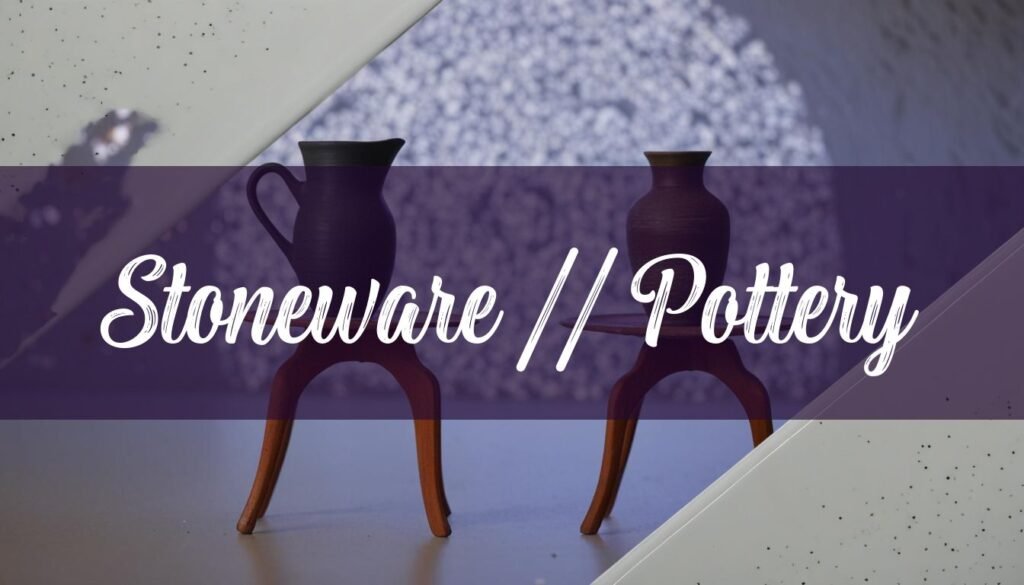Stoneware clay is a versatile and durable material favored by potters for its strength and ability to withstand high firing temperatures. If you’re just starting your journey into the world of ceramics, understanding how to work with stoneware is essential for creating functional and beautiful pieces. This guide will walk you through the basics, from the properties of stoneware to glazing and troubleshooting common issues. Stoneware’s popularity stems from its workability, firing temperature range, and the pleasing aesthetic it offers. Earthen-colored stoneware clays, for example, are known for producing durable ware and react well to techniques like reduction firing, where air, gas, and smoke are manipulated to achieve unique effects. These clays often exhibit good plasticity, making them suitable for both wheel throwing and hand-building methods.
The Properties of Stoneware Clay
Stoneware is celebrated for its robust nature, which allows it to be fired at high temperatures, typically between 2200-2400°F (1200-1315°C). This intense heat results in a less porous and absorbent material compared to earthenware, making it ideal for creating pottery intended for cooking and storage. Stoneware’s minimal water penetration ensures that it’s perfectly suited for holding liquids and foodstuffs, a quality that sets it apart from more porous clays. Its structural strength and resistance to thermal shock mean your creations will withstand the rigors of everyday use. Additionally, stoneware exhibits less shrinkage during firing, typically around 8-12%, which minimizes the risk of cracking and contributes to its excellent “green strength,” or the strength of the clay as it dries. Stoneware clays typically appear white or gray when water is added.
Essential Tools, Equipment, and Clay Preparation
Before you start shaping your stoneware, you’ll need some essential tools and equipment. While the specific tools can vary depending on your chosen techniques, some basics include a pottery wheel for throwing, a kiln for firing, and various shaping tools like ribs, scrapers, and sponges. For preparing the clay, wedging is a crucial step. Wedging removes air bubbles and aligns the clay particles, resulting in a smooth, workable consistency. This process is vital to prevent cracking and ensure even drying. Stoneware clays often contain mineral impurities like silica, feldspar, ball clay, and quartz, which contribute to their unique properties. In man-made forms, stoneware is also mixed with ball clay and fire clay to increase its melting point, making it more resilient to high temperatures. High fire white stoneware clays are prized for the clean canvas they provide for glazes, though some iron speckling may occur. Midrange stoneware clays offer similar workability to cone 10 clays but can save on firing costs due to their lower firing temperature. You may even want to learn how to make clay at home for pottery. Also, it is important to understand what type of clay is used for ceramics.
Forming, Glazing, Firing, and Troubleshooting
Once your clay is prepared, you can explore various forming methods. Pinch pots are a great starting point, involving shaping a ball of clay with your fingers. Coil building involves rolling out coils of clay and joining them to create walls, while slab construction uses flat sheets of clay to assemble forms. Each method offers unique possibilities for creating different shapes and textures. Glazing is both an art and a science. Selecting appropriate glazes for stoneware is crucial, considering their firing temperature and desired effects. Common glazing techniques include dipping, pouring, brushing, and spraying, each offering different levels of control and aesthetic outcomes. Understanding the firing process is equally important. Stoneware is typically fired between Cone 2 and Cone 12, with Cone 6 and 10 being the most common for mid-range and high-fire stoneware, respectively. The firing temperature affects the clay’s hardness, durability, and the glaze’s final appearance.
Throughout the process, you might encounter challenges such as cracking, warping, or glaze defects. Troubleshooting involves identifying the cause, such as uneven drying, improper wedging, or incorrect firing temperatures, and taking corrective measures. Keeping detailed records of your materials and processes can greatly aid in diagnosing and resolving issues. Remember, each type of stoneware clay has its own nuances. Some clays have added sand to increase strength and workability, while others are prized for their ability to create a blank canvas for glaze colors. By understanding these properties and experimenting with different techniques, you’ll be well on your way to creating stunning stoneware pieces.





